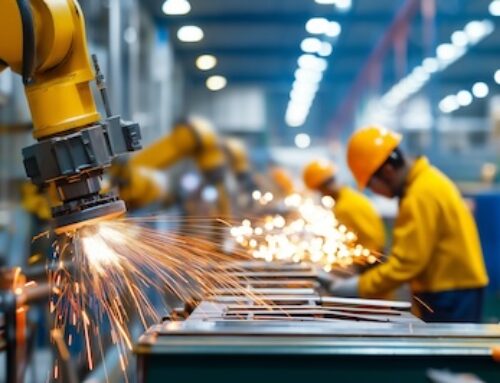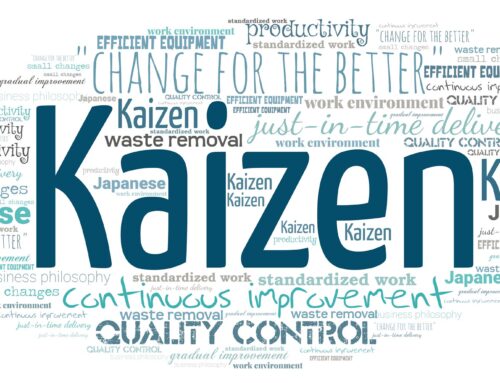Are inefficiencies and waste leaving your manufacturing process feeling less like a flowing river, and more like a wild roller coaster?
What if there was a way for your organization to reduce production time, while simultaneously reducing defect rates and improving customer satisfaction?
Lean manufacturing offers a way. The Lean process has helped countless organizations eliminate waste, while maximizing value for their customers.
Today, Manex will show you how embracing Lean manufacturing and the 5 lean principles can be used to enhance your efficiency, reduce costs, and improve customer satisfaction. Let’s begin.

What is Lean Manufacturing?
Lean manufacturing is a systematic approach to production that seeks to streamline operations through the identification and elimination of waste, while maximizing value for the customer.
In the Lean process, value is defined as what the customer is willing to pay for a product or service. Waste can appear in a variety of ways, such as overproduction, defects in the product, unnecessary transportation, and time spent waiting. All of these things lead to increased costs and reduced efficiency.
Therefore, the goal of Lean manufacturing is to maximize productivity by eliminating anything from the end product that doesn’t add value for the customer.
By focusing on minimizing waste, organizations that embrace lean manufacturing see a reduction in operating costs along with improved product quality. Lean manufacturing has been successfully adopted by countless organizations in a diverse range of industries including manufacturing, healthcare, software development, and more.
Lean manufacturing owes its roots to the Japanese auto manufacturer Toyota, and the Japanese concept of Kaizen – continuous improvement. Kaizen principles in Lean manufacturing are used to analyze a process and eliminate unnecessary steps. This distills the process to its most essential elements, thereby eliminating waste and increasing value to the customer.
The 5 Lean Principles
Lean manufacturing is a systematic approach to delivering continuous improvement in an organization. It is composed of 5 Lean principles: Value, Value Stream, Flow, Pull, and Perfection.
Let’s break each of these lean principles down to see how they are used to create the lean process.
Identify Value
Lean principles begin with understanding the value of the product or service from the customer’s perspective. Value is derived not just from a product’s features, but also its cost. Other factors such as product quality and even delivery time all comprise the value of the product for the customer. As a manufacturer, you should seek to optimize your process so that the price for the customer meets the maximum profit.
Map the Value Stream
A value stream map is a tool used in the Lean process to visualize the entire lifecycle of a process. It begins with raw materials, and follows the product all the way to the customer’s hands. This tool breaks down each of the steps involved in the process so that they can be analyzed for opportunities to reduce waste. Understanding the value stream can help to eliminate waste in areas like inventory, overproduction, transportation, and defects.
Create Flow
Once the value stream has been mapped, the next Lean manufacturing process step is to create a continuous flow of work that eliminates any bottlenecks and interruptions to the process. The work must flow smoothly, minimizing wait times as production moves from one process to the next.
Establish a Pull System
Most organizations utilize a push system, which determines inventory in advance by predicting sales. Lean manufacturing takes a different approach, emphasizing a pull system, which produces products in response to customer demand. A pull system avoids over or underproduction due to inaccurate sales prediction, reducing warehouse costs and other wasteful expenditures. A Kanban board is a visual tool used to implement pull, and communicate the demand for different processes.
Strive for Perfection
The 5th step of the Lean process is about implementing the Japanese concept of kaizen – seeking continuous improvement in your processes. Kaizen principles in lean manufacturing help businesses to gradually improve their processes over time, by making small incremental improvements to eliminate waste and improve the value stream. A perpetual cycle of identifying and removing waste must be ingrained into an organization’s culture, from the frontline workers, all the way up through to the executive level. Everyone must share in the responsibility to maximize value for the customer, eliminate that which does not provide value.
Lean Manufacturing Benefits and Challenges
Like any system, the Lean process has its benefits as well as challenges. We’ll look at a few of each.
Lean Manufacturing Benefits
- Increased Efficiency – The primary benefit of the Lean process is its emphasis on reducing waste. More efficient workflows lead to better resource allocation, improved flow, and increased productivity.
- Greater Customer Satisfaction – Lean helps to reduce defects in products, which directly correlates to increased customer satisfaction.
- Reduced Costs – By eliminating waste, Lean manufacturing reduces costs. It also encourages producing products based on demand, reducing the need to store unsold products and further cutting costs.
Challenges of Lean Manufacturing
- Short-Term Focus – Some critics of the Lean process say that it focuses on short-term gains, at the expense of future development. It’s important to balance streamlining performance with consideration for future needs.
- Employee Integration – Employees are often resistant to change in their daily work processes. It may take additional training for employees to understand how to work with lean principles.
- Difficulty Measuring Results – The benefits of Lean manufacturing don’t appear overnight. It can be difficult to measure the results in the short term, often taking months or longer to see quantifiable results.
Kaizen Principles In Lean Manufacturing
We touched earlier on how Kaizen is used in Lean manufacturing to make continuous small improvements to a process over time. Now we’ll look more specifically at how Kaizen principles in Lean manufacturing are used:
5S
5S is a framework for organizing a workspace. It is comprised of 5 steps:
- Sort – Remove unnecessary items from the workspace.
- Set in Order – Ensure that items are set in a logical and easy-to-access manner.
- Shine – Keep the workspace clean and organized.
- Standardize – Create standard operating procedures.
- Sustain – Review and improve the 5S process continually.
Visual Management
Utilizing visual tools, such as Kanban boards, helps to illustrate workflows. These can be used to identify where bottlenecks occur, or other areas where flow is restricted.
Mistake-Proofing
Known in Japanese as poka-yoke, mistake-proofing is a technique used to prevent errors from occurring. It involves specifically designing a process to make mistakes impossible, or easily detectable. An example would be color-coding wires, or using shape-coded pieces.
Standardized Work
Standardized work is an often-used Kaizen principle in Lean manufacturing that creates a consistent standard procedure for completing a task. It ensures that any worker can achieve quality and consistency in the production process.
These are just a few of the Kaizen principles in Lean manufacturing that can have a significant impact on an organization over time.
Conclusion
Lean manufacturing is a powerful method for organizations to maximize the value they create for their customer, while simultaneously eliminating waste in their production process. It is achieved through the application of the 5 lean principles: identify the customer’s value, map the value stream, create flow, establish pull, and pursue perfection through Kaizen – continuous improvement.
The application of Lean principles helps an organization increase efficiency and reduce waste, while creating greater customer satisfaction. It’s an effective method that countless companies around the world have implemented to maximize value, while reducing effort.
Ready to streamline your manufacturing process while increasing customer satisfaction?
Contact Manex today for a FREE consultation, and let us help your organization embrace Lean manufacturing.
We are Northern California’s most hired manufacturing consultant, helping hundreds of organizations like yours adopt lean manufacturing to maximize customer value and streamline their operations.
Don’t put your company’s future on hold any longer. Contact Manex today and let our manufacturing experts guide you in implementing Lean manufacturing in your organization.


